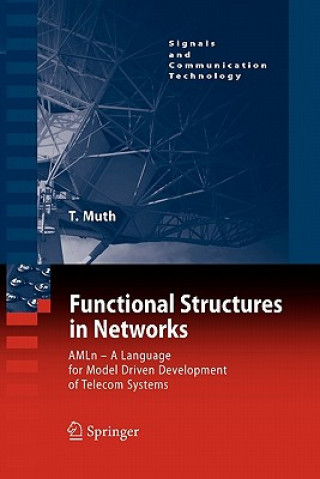
Delivery
Shopping guide





Doesn't suit? No problem! You can return within 30 days
 Gift voucher
any value
Gift voucher
any value
You won't go wrong with a gift voucher. The gift recipient can choose anything from our offer.
Functional Structures in Networks
 English
English
 317 b
317 b
 Delivery to Austria
Delivery to Austria
30-day return policy
You might also be interested in


Designed to make life easier for most network designers, whether they are a manager with technical background, work with standardization, the architecture of implementers solutions to standards, product design (constructing the software and hardware parts of operator networks), system testing, and for operators responsible for the configuration and maintenance of a network. §Develops modeling as a basic principle for producing specifications turns design from being document driven to model-driven. In the context of this book, however, the only model type that is discussed is the information model that describes the purpose, structure, and behavior of a network. §Presents an added-value modeling language that called AMLn (Abstract Modeling Language, network view), which is the first and, so far, the only attempt to create a modeling language for network systems.The book describes a method for creating models of telecom systems. The method is intended for practicing network architects and designers. This method emphasizes modeling the (very complex) functional structure of networks in a way that is independent of any hardware and software design methodology. The method also allows designers to express their model in two main views: a generic view and a system view that takes protocols and network configuration issues into account. The idea is to retain a stable view (the generic) in the context of constant changes and large variations within the system view. The expected benefits are large savings in telecom systems development and maintenance. The terminology is domain unique, i.e., based on de-facto telecom terminology. All concepts that are used in modeling are well defined. The purpose of using a telecom-oriented terminology instead of industry-standard methods for software and protocol design (e.g., UML and SDL) is to be able to create models that are expressive and intelligible for network architects and designers. Models are created as graphical models that show the functional and physical structure of networks at different levels of details. Information on properties, including behavior is attached to the models. A fairly small set of symbols is used in modeling.
About the book
 English
English


 Contact
Contact How to shop
How to shop





















